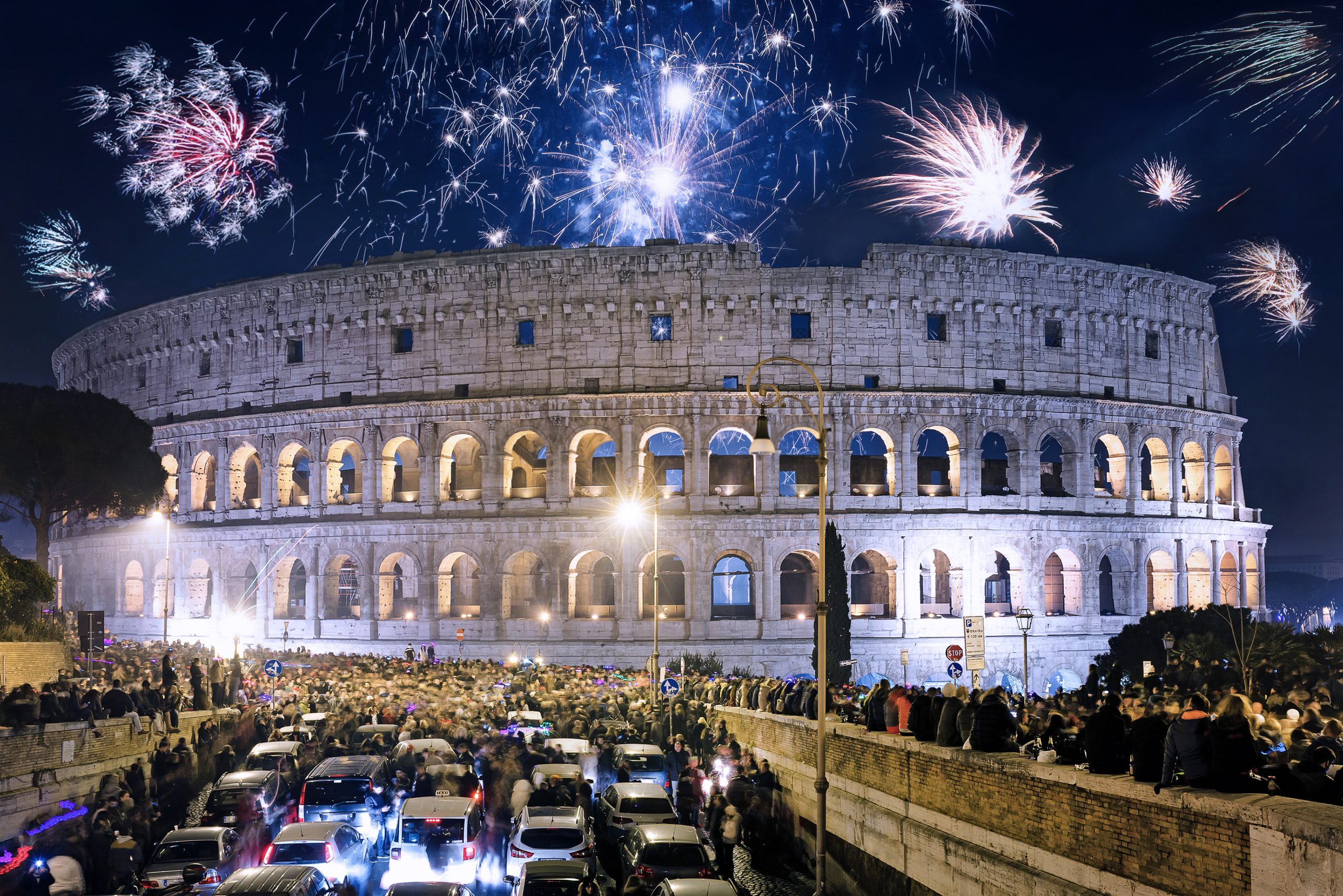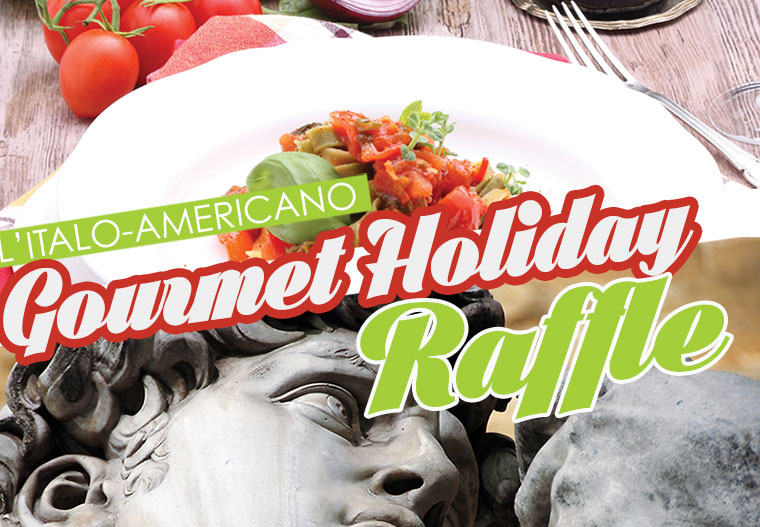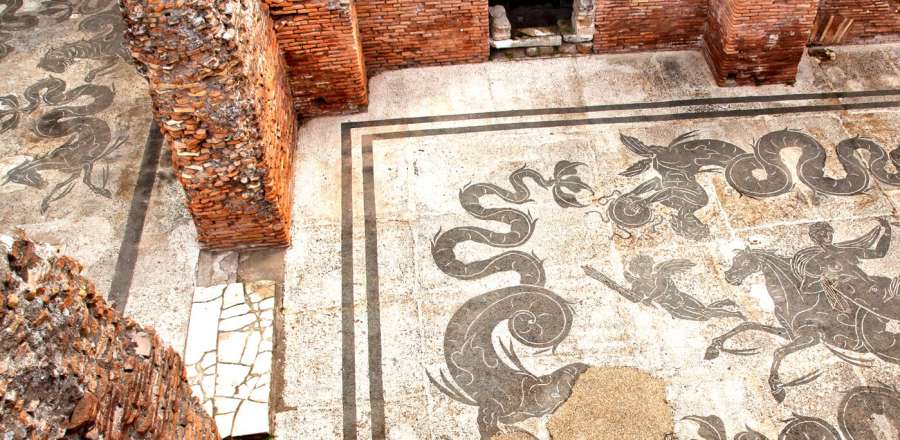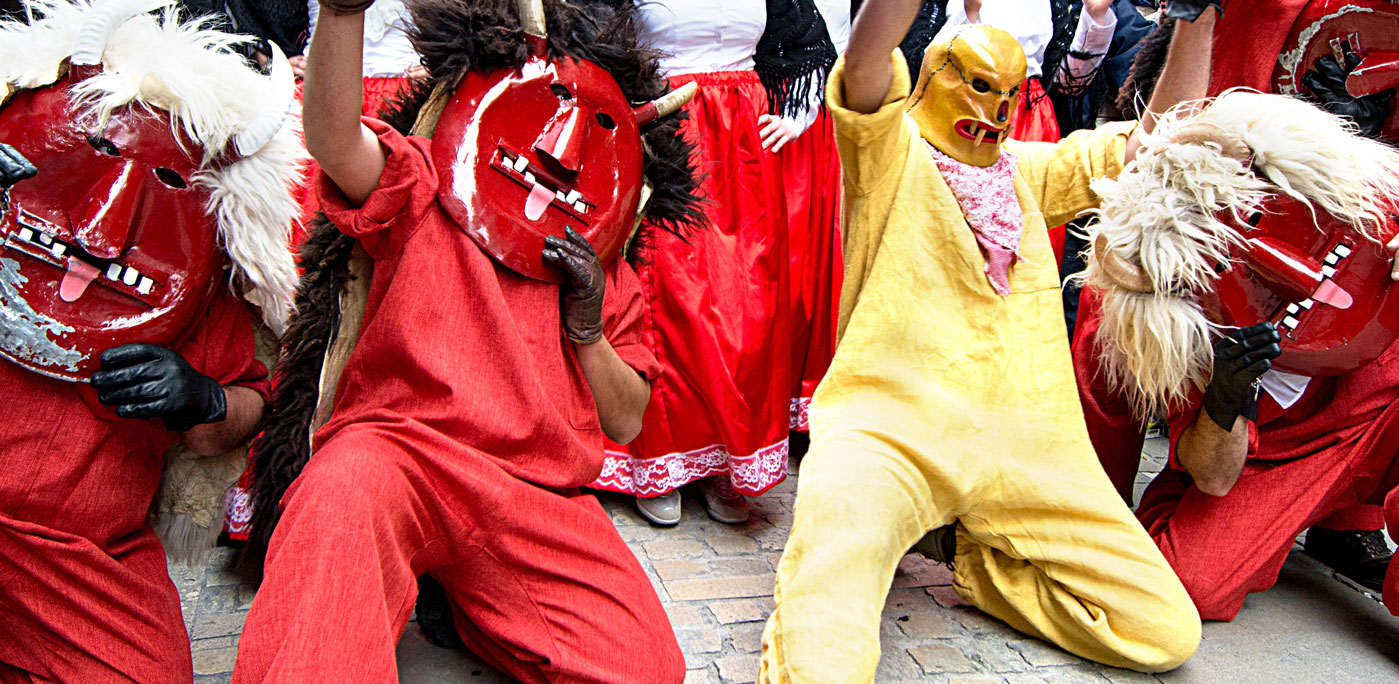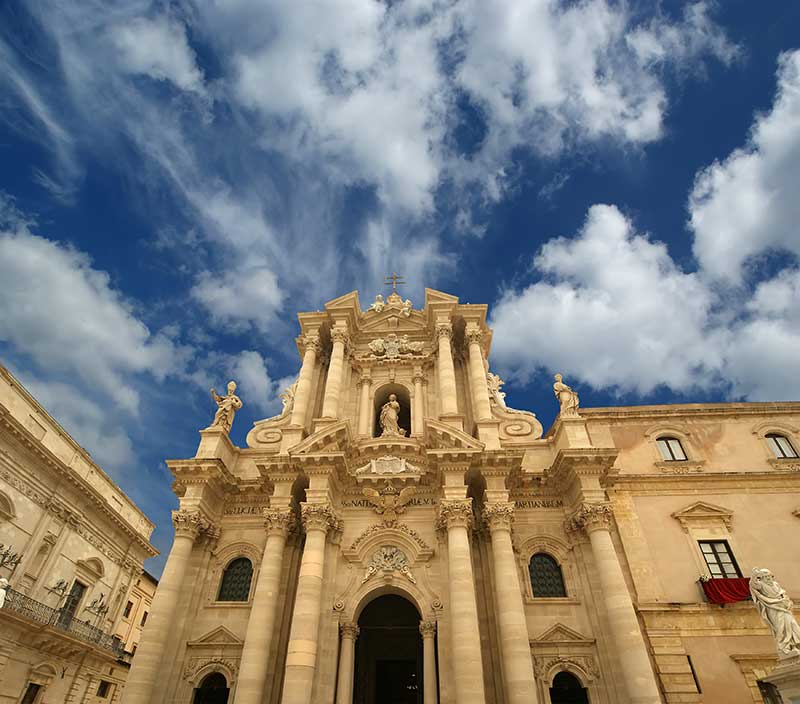From scarlet undies to pig’s trotters, fireworks to fearless bridge divers or tombola to fat ox parades, Italians love to celebrate the New Year with some wonderful traditions. It’s all to help usher in good luck and a good year. So how have celebrations differed throughout the country and years? Let’s have a look!
New Year’s Eve or La Festa di San Silvestro
The end of the year and the beginning of the new is celebrated in Italy with the Vigilia di Cappodanno or Festa of San Silvestro. And as in so many countries around the world, celebrations include food, drink and traditional rituals to herald in a prosperous new year. But who was the saint who gives his name to the day?
Whether you call him Silvestro, Silvester or Sylwester, the man was one of the first Popes, serving between 314 and 335 AD. Not much is known about his life. He oversaw the conversion and baptism of Roman Emperor Constantine to Christianity. He also chaired the first Council of Nicaea, a meeting of all bishops called to discuss and agree church matters. And, if you believe the legends, Silvestro also slayed a dragon in a pit in Rome after St Peter came to him in a dream telling him how to conquer the creature. None of this links Silvester to New Year’s Eve, however.
Ultimately 31st December is a feast day for two reasons. Firstly, since the adoption of the Gregorian calendar this is the last day of the year. And, secondly, because San Silvestro died on this day in 335 AD. It’s a happy coincidence and double the reason to celebrate.
Italian New Year’s Traditions
Italians have many traditions; some local, others national. One that seems to be universal at New Year is the wearing of red undies. And whether it’s Grandad in red long johns, brothers in red underpants, cousins in lacy corsets or simply Granny in her comfy red knickers everyone gets in on the act. The color is said to bring the wearer good fortune and it’s also considered good luck to be given red underwear as a gift. Just be careful as red is also the sign of fertility so the new year could be bringing more than you bargained for!
The origins of the tradition are lost in time but one suggestion is that medieval men covered their “family jewels” in a red cloth to protect themselves from evil witches who were believed to fly at midnight. Whatever the source its great to see underwear shop windows filled with red undies and to think of everyone joining in on this quiet little custom. Just don’t forget to throw out your smalls the next day for the ritual to take full effect!
Another common Italian New Year’s Eve tradition is the cenone or big family dinner that brings friends and relatives together for several courses before the clock strikes midnight. But whilst cenone is universal, the dishes that grace the dinner table have definite regional origins.

One of the main dishes associated with the festa di San Silvestro is Zampone di Modena, a hot, succulent sausage from Emilia-Romagna. The Zampone evolved using the hollowed out skin of a pig’s trotter, filled with pork, pork rind, fatback and other offcuts as a way to preserve the pork meat – symbolizing richness of life – including some of the less tender cuts. And today, although Zampone isn’t eaten as often as it used to be, when it is served, it’s often accompanied by another typical dish for New Year; round yellow lentils that represent coins and herald prosperity for the new year. Sounds like a delicious way to end the year!
Local customs
In cities and towns around the country, locals also know how to celebrate too, each with their own variations on the theme.
If you’re in Bologna look out for the Fiera del Bue Grasso or fat ox fair including ribbon-decked oxen, church bells, candles and a procession through the streets. As the clocks strike midnight an effigy of an old man is thrown onto a bonfire to exorcise the old year whilst fireworks are lit to usher in the new one. And you can even win the ox if you buy a raffle ticket!
In the south, the old custom was to throw your old things out of the window to make space for the new. Old kitchenware or plates were also smashed in a similar tradition so it could be a dangerous time walking through the streets as midnight approached although this is a tradition that is sadly dying out.
Staying down south, Naples has another rare old custom called Lo Sciuscio. Groups of local musicians would traditionally go from house to house playing and singing in return for sweets or money. And just as with trick or treating, if you give them something nice, you bring good luck on your house, whereas refusal risks bad luck. Unfortunately this is another wonderful tradition that has all but died out. But if you happen to see a group on the 31st, make sure to stop to listen and give them sweets!
Up north in Venice more celebrations await at the heart of the city. Thousands of locals and visitors gather in St Mark’s Square, armed with Prosecco and boots against the high tide. Fireworks light up the dark starry sky and the bells of St Mark’s ring out as Venetians indulge in a mass kiss at midnight. That’s one way to kick off the New Year in style!
And finally, if your head isn’t too sore and you happen to find yourself in Rome on New Year’s Day, there’s one custom that is worth a look but not for the faint-hearted; the Tiber River divers. The tradition has been handed down from diver to diver over the years but started originally as an advertisement for work by an out of work stuntman back in 1946. Today divers wear red swim trunks and dive from the Cavour Bridge into the icy Tiber River as a symbol of their good wishes for the city. It’s spectacular but not one to try yourself! Buon Capodanno a tutti!
